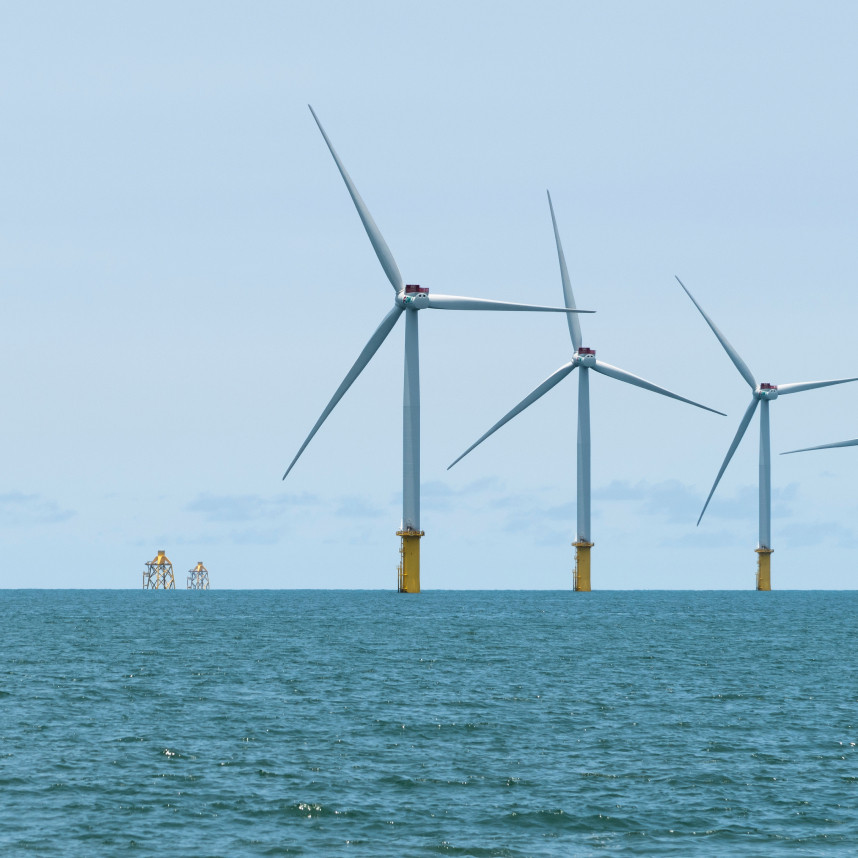The world's growing demand for energy has increased offshore installations, such as wind farms, oil rigs and underwater cables. While these installations are essential for meeting our energy needs, they can significantly impact ocean ecosystems.
In this blog, we will explore how energy installations change ocean ecosystems, the challenges they pose and the solutions that can mitigate their effects.
Development and operation offshore: Habitat loss, noise, and dust pollution
One of the most direct and immediate impacts of energy installations on ocean ecosystems is habitat loss. When offshore energy projects are developed and operated, they often require the placement of infrastructure on the ocean floor, which can disrupt and destroy fragile marine habitats. For example, the installation of wind turbines in shallow coastal waters can disrupt seafloor habitats where fish spawn and feed, leading to decreased biodiversity and reduced fish populations.
Additionally, the construction and maintenance of energy installations generate noise and dust pollution, which can harm marine life. Noise pollution can interfere with the communication and navigation of marine mammals, such as whales and dolphins, which rely on sound for various activities, including finding prey and mating. Dust pollution from drilling operations can smother and harm benthic organisms on the seafloor, disrupting the food web and causing long-term damage to ecosystems.
Better impact assessments and mitigation strategies
It is essential to conduct thorough impact assessments and implement effective mitigation strategies to address the negative impacts of energy installations on ocean ecosystems. Companies that fail to do so may face fines and regulatory hurdles, while those that take proactive measures can often obtain grants and approvals more easily.
The offshore wind industry has made significant strides in understanding and mitigating its impact on ocean ecosystems. In the United Kingdom, developers must conduct Environmental Impact Assessments before constructing offshore wind farms. These assessments evaluate the potential impacts on marine life, including birds, fish and mammals.
In the oil and gas sector, companies have invested in technologies to reduce the environmental impact of their operations. For example, they employ advanced drilling techniques that minimize dust emissions and implement best practices for spill response and cleanup. These measures protect ocean ecosystems and save companies millions of dollars in potential cleanup costs and fines.
AI-powered monitoring and analysis tools
In recent years, the emergence of AI-powered monitoring and analysis tools has revolutionized our ability to assess and manage the impact of energy installations on ocean ecosystems. These tools provide unprecedented, system-wide awareness, allowing for real-time monitoring and data-driven decision making.
AI-powered drones and underwater robots equipped with sensors can collect data on ocean conditions, marine life behavior, and the effects of energy installations. For instance, researchers and environmental organizations are using AI to track the movements of marine species near offshore wind farms, helping to understand their behavioral responses to such structures better.
AI-driven predictive modeling can simulate the potential impacts of energy installations on ocean ecosystems under various scenarios. By analyzing large datasets and running simulations, these models can help companies and regulators identify optimal locations for offshore projects where the environmental impact is minimized. This not only benefits marine ecosystems, it also helps companies maximize operational efficiency.
Conclusion
Offshore and onshore energy installations are essential for meeting our growing energy needs. However, they can significantly impact ocean ecosystems, leading to habitat loss, noise and dust pollution. Companies must conduct thorough impact assessments and implement effective mitigation strategies to address these challenges. Additionally, integrating AI-powered monitoring and analysis tools offers a promising avenue for minimizing the adverse effects of energy installations on ocean ecosystems.
By embracing these solutions and learning from industry examples, we can balance energy development and environmental conservation to ensure a sustainable future for our planet and its precious oceans. Companies that prioritize responsible practices and invest in innovative technologies stand to avoid fines and regulatory hurdles and contribute to preserving our marine ecosystems for generations to come.
To learn more about out blue energy initiative, take a look at our blue energy page. You'll find more blog posts about Cognizant Ocean blow.


















